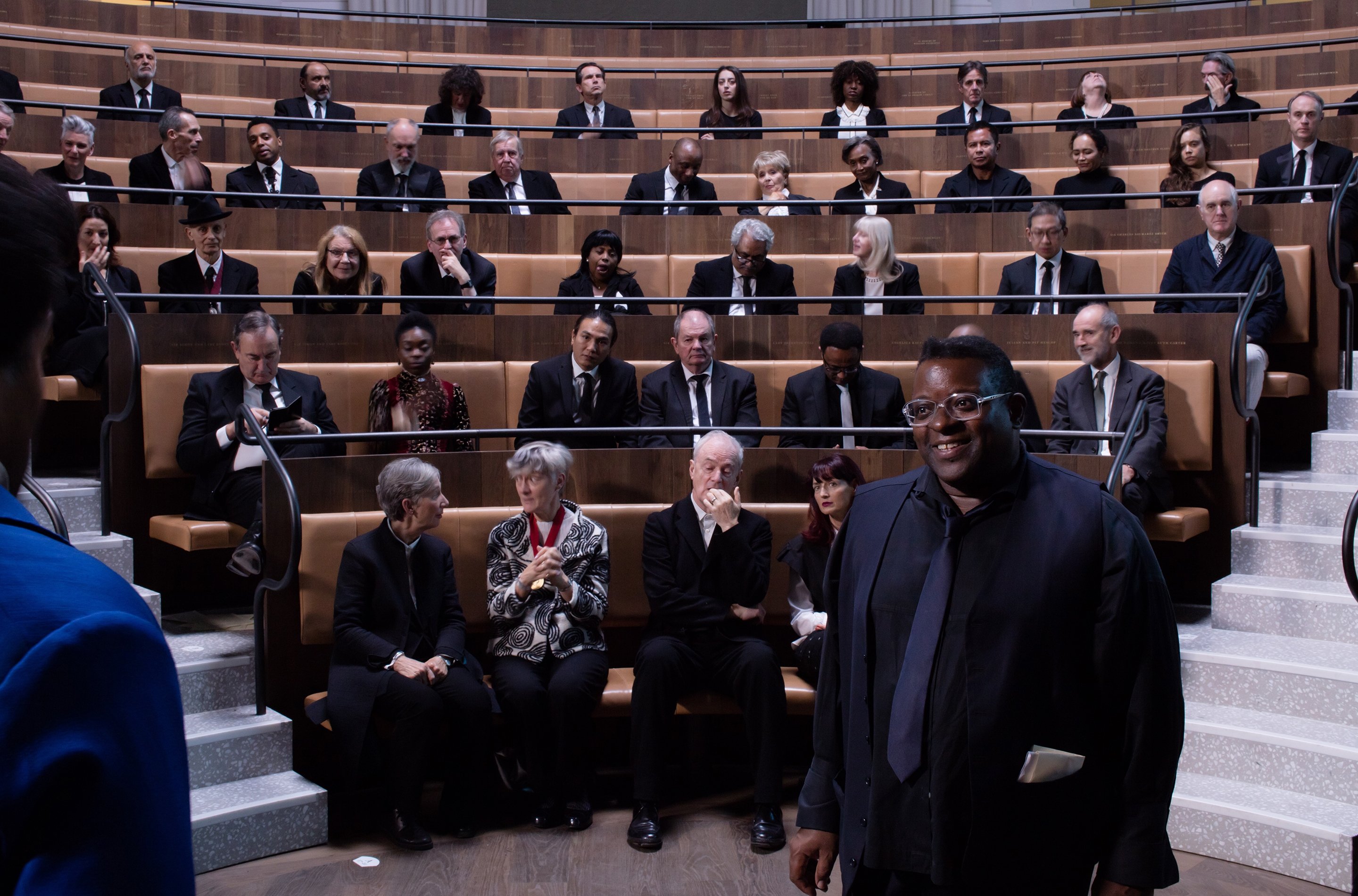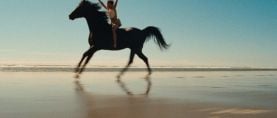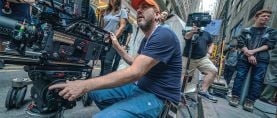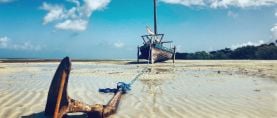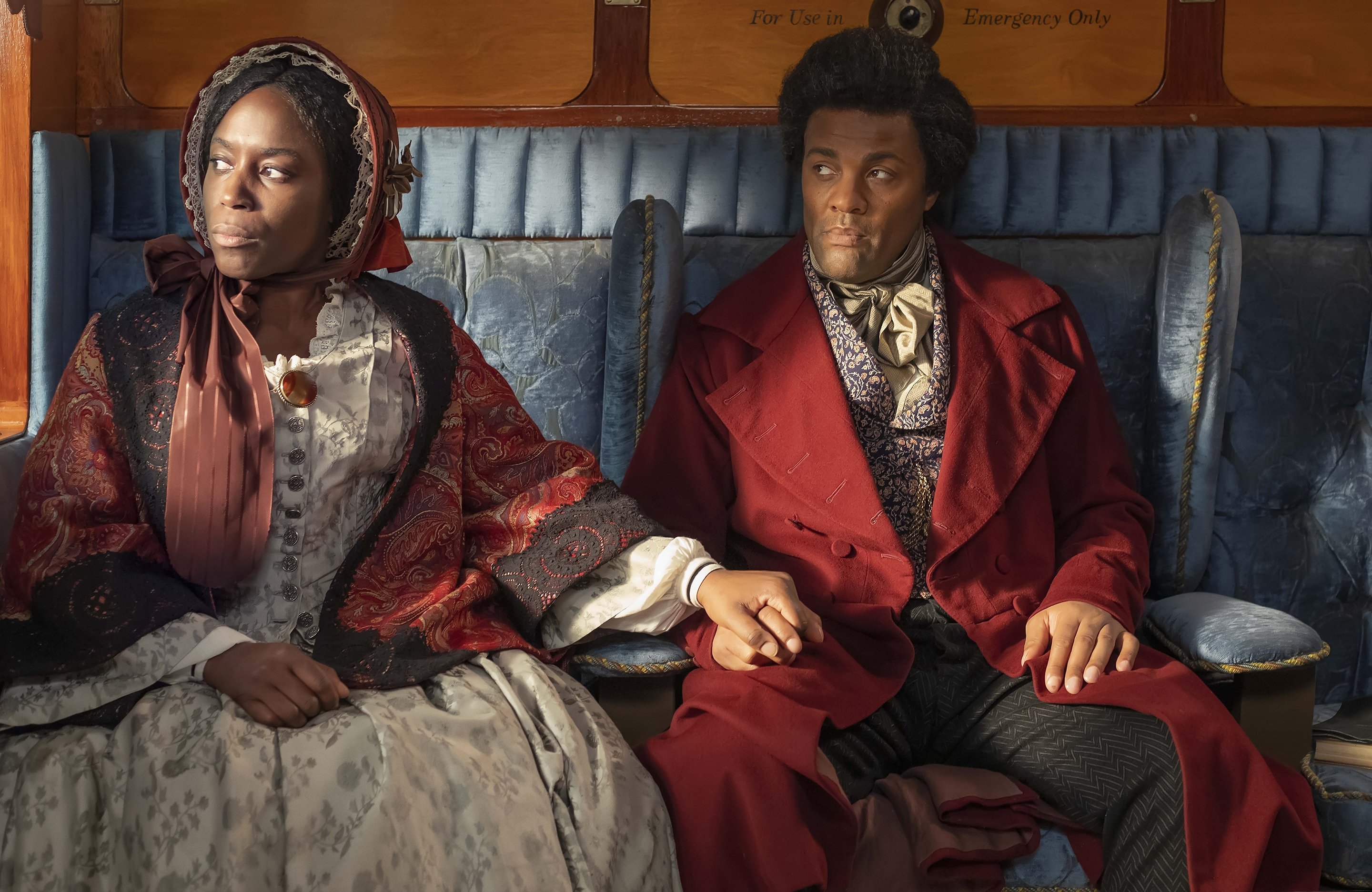
Lessons of the Hour: Visualizing History
Director Isaac Julien and Nina Kellgren, BSC craft a unique multi-media portrait of Frederick Douglass.
Installation images by Emile Askey. Courtesy of the The Museum of Modern Art, New York
Filmmaker and installation artist Isaac Julien and cinematographer Nina Kellgren, BSC have collaborated on numerous projects merging art and cinema, including the landmark film Looking for Langston (1989). One of their latest collaborations is Lessons of the Hour, an exploration into the life of African-American abolitionist, orator and statesman Frederick Douglass. Currently on exhibit at the Museum of Modern Art in New York City, the 10-screen, rear-projected installation delves into Douglass' legacy, mixing historical events with Julien’s distinct visual style.

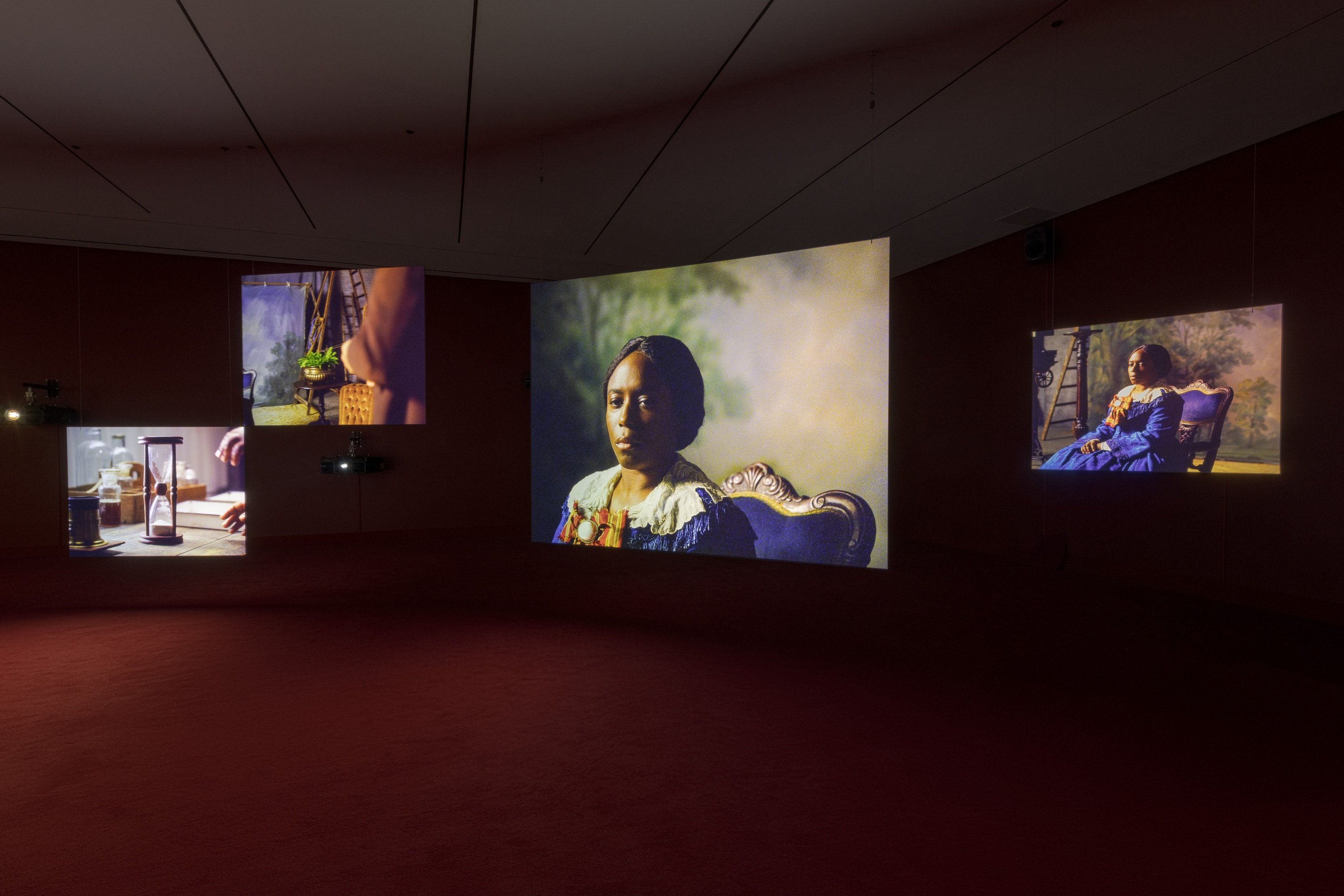
The project posits itself as a poetic meditation into the turbulent times Douglass lived through in the 19th century and their reflection on contemporary notions of race and identity. His words are brought vividly to life via a powerful performance by their lead, Royal Shakespearan actor Ray Fearon (Coronation Street, Barbie, Fleabag, His Dark Materials). Lessons demanded creative ingenuity and technical precision, which Julien and Kellgren brought to bear.
Approach to Filmmaking
Julien’s creative process circumvents rigid structures and linear narratives. Instead, he starts with broad ideas and refines them through collaboration with his team, spearheaded by Kellgren. “Before I make a work, I always ring Nina,” says Julien. “We get together and think about how we will cinematographically approach it.”
Kellgren elaborates, “We use strategies that you might use in a documentary or a feature film. But we’re not tied to a linear narrative, and we’re not tied to a specific time period. There’s a lot of creative flexibility in our approach, in the ways we tell a story.”
Julien works with a mix of cinematic tools and methods, borrowing from various disciplines. “I’m someone who combines all the different approaches to how one might make a film,” he explains. According to Kellgren, this freedom allows for the integration of different influences. “There isn’t a script per se,” the cinematographer says. “But you get this fantastically rich series of ideas, such as poems, writings, imagery, thoughts and music. And then our process builds from there into a filmic narrative.”
Multiscreen Storytelling
One of the most distinctive aspects of Lessons of the Hour is its use of multiple screens, which encourages the audience to engage with the piece more actively than with a traditional, single-screen film. Julien acknowledges that this kind of storytelling demands unique choreography. “In a more conventional setting, you have an A and B camera and then B-roll,” he says. “But I ban that term — there is no B camera. Everything has equal value.”
Kellgren concurs, “Every image is important on the screen,” she says. Their approach creates a unique viewing environment where the audience chooses where to look, making each viewing a new and potentially different experience.
Julien explains further: “It’s all about the process. Some scenes are shot as a documentary, but others are in a more fictional style. There’s a back and forth between the cinematic and the pictorial, and sometimes you just need stillness in a shot.”
The screens also vary in size, adding different levels of visual emphasis to the storytelling. “The major speeches, of course, belonged on the larger screens,” says Julien. “I also like a spatial dynamic so sound is also instruction to how you choose where to look.”

Technical Choices
The technical specs for Lessons of the Hour were key in bringing Douglass’ story to life for modern audiences. Julien and Kellgren shot in a combination of digital and film formats, depending on the needs of each scene. “We shot both on the Arri Alexa and on 35mm film,” says Kellgren. “We also shot some Super 35, with everything framed at 4:3.”
The decision to use motion-picture film was tied to the portrayal of Douglass, one of the most photographed men of the 19th century. “He was very aware of how important image was, so we made a conscious decision to reflect that in the format we used,” Kellgren observes.
The team utilized the Alexa for scenes that required a modern aesthetic. “We shot extensive tests,” says Kellgren. “For example, when we were in the Royal Academy, shooting on the Alexa was connected to capturing the immediacy of Douglass’ speech delivery.”
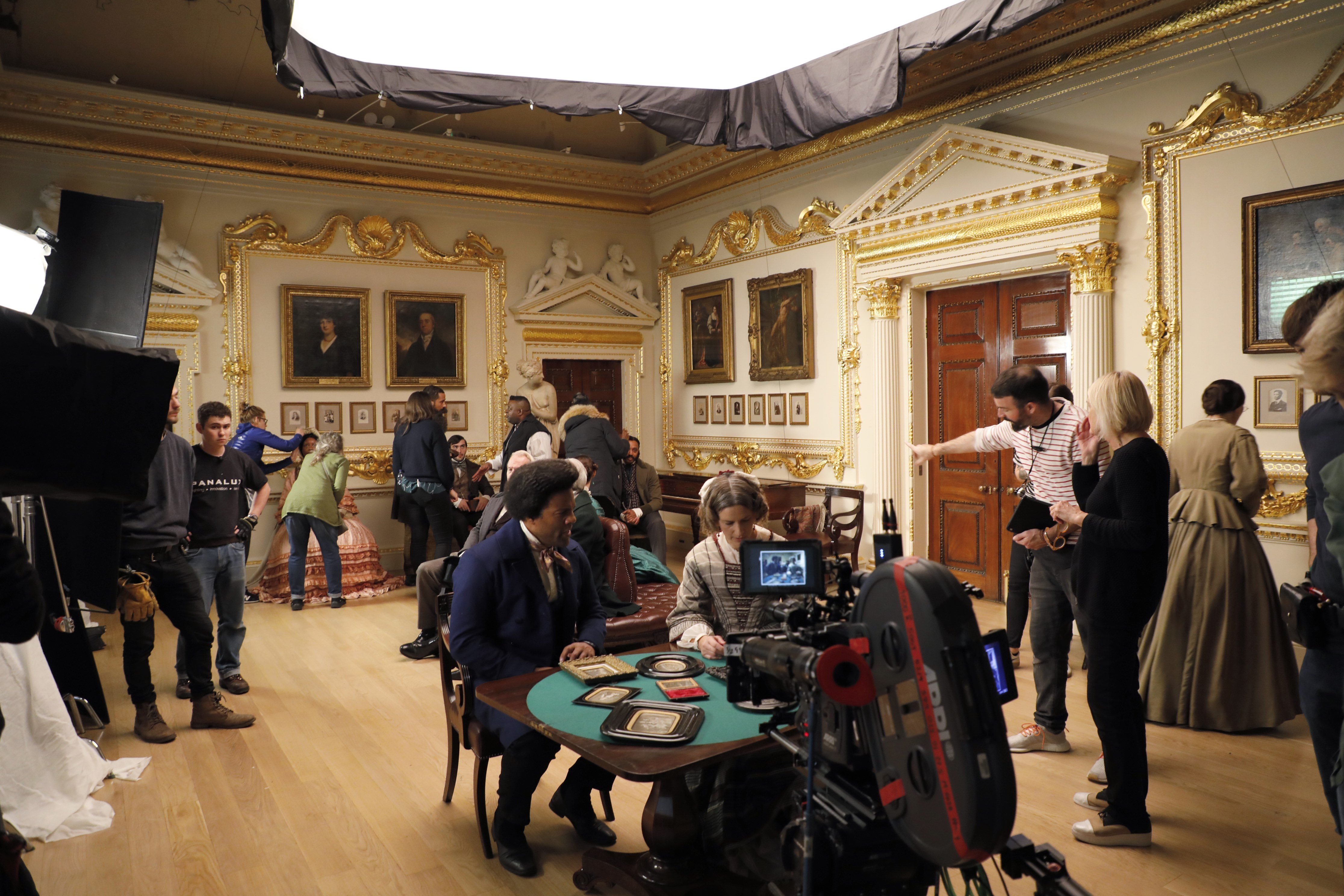
Capturing Historical Locations
Shooting on location was another important aspect of Lessons of the Hour, particularly in historical settings such as Douglass’ former residence in Washington, D.C. “We sometimes shot in places where there wasn’t a lot of support,” says Kellgren.
To smoothly capture the movement and atmosphere of these settings, the team deployed a combination of Steadicam, operated by Tom Wilkinson, and Trinity, operated by Charlie Rizek. “We always work with two cameras, pretty much on everything. We’ve had three at times,” Kellgren adds.
The movement captured by these rigs influenced how the screens were choreographed. “Movement translates a lot into how you’re going to edit the work,” says Julien. “There’s a choreography that takes place between the screens.”
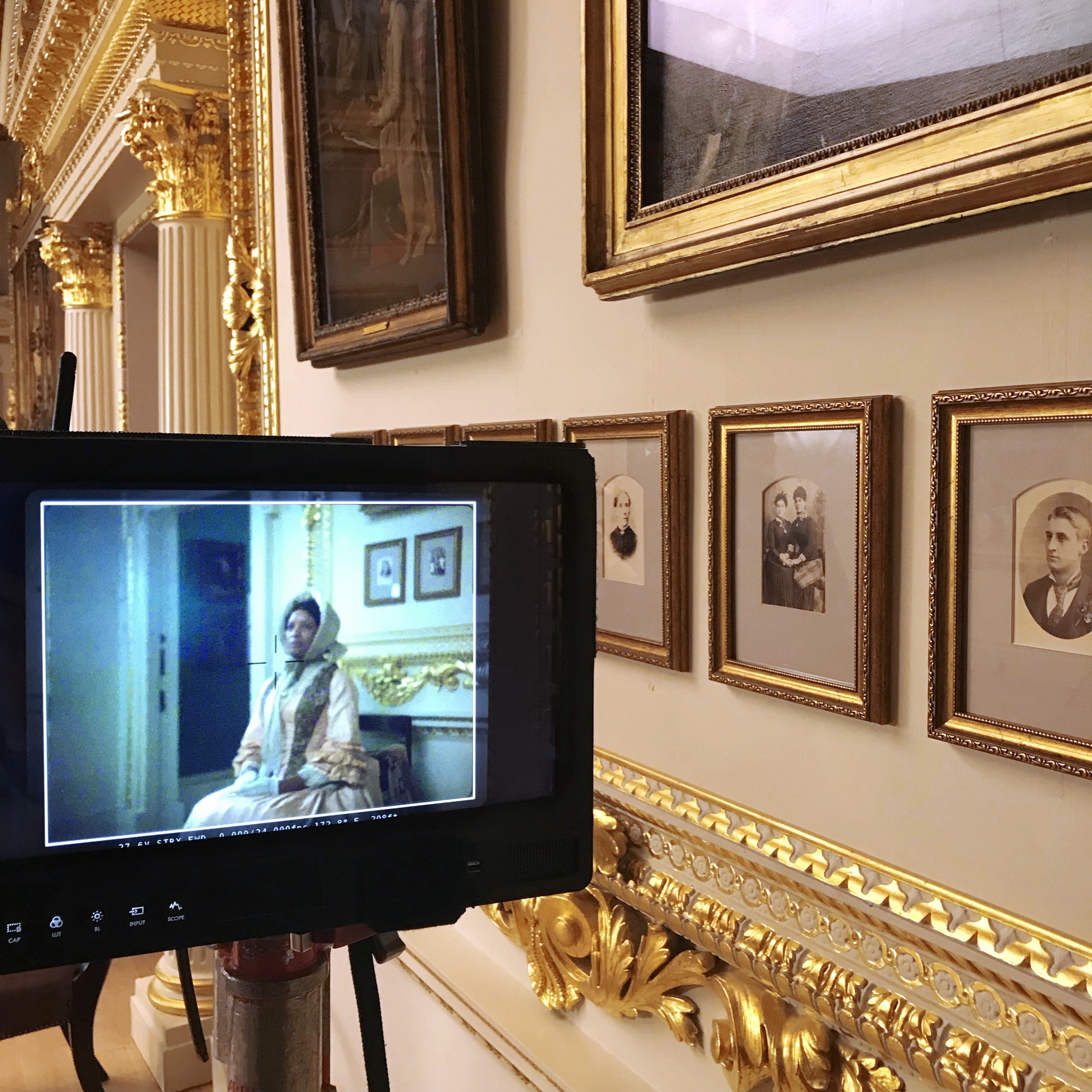
Post Process
The editing of Lessons of the Hour was also unconventional. Without a traditional script, Julien and editor Adam Finch constructed the film in the Avid based on visual and thematic connections rather than a predefined narrative. “In a feature film, you’d go for as many takes as you need until you’ve got it,” says Kellgren. “This is a different kind of thinking.”
Julien adds that working with multiscreen installations means that scenes are sometimes covered in longer takes than traditional filmmaking. “There’s improvisation involved,” he says. “We overshoot a scene because having it overlong allows different actions to happen side by side.”
This approach demanded a high level of adaptability from the crew. “Running overlong is key,” says Kellgren. “It’s quite hard for new people to come into the team and get that. You need a kit, personnel and everyone on board so we can change direction quickly.”
Reflections
Lessons of the Hour was an artistic success for Julien and Kellgren in technical execution and storytelling. The multiscreen format challenges traditional narrative filmmaking, allowing for a more personal experience for the viewer. And Julien and Kellgren are committed to this experimental approach.
Asked for his parting thoughts about the project, Julien says, “It’s about trying to let the process lead what you want to say and abandoning the more conventional, procedural way that one might approach filmmaking.”
For Kellgren, it’s about the sum impression of the different screens. “You’re not creating meaning within a single image,” she says. “Sometimes the image needs to be calm because complexity will come from elsewhere.”
For more information on Lessons of the Hour, visit Julien’s official website here and the exhibit at MoMA here. The installation can be visited there until Sept 28. More about this exhibit can be found here.
